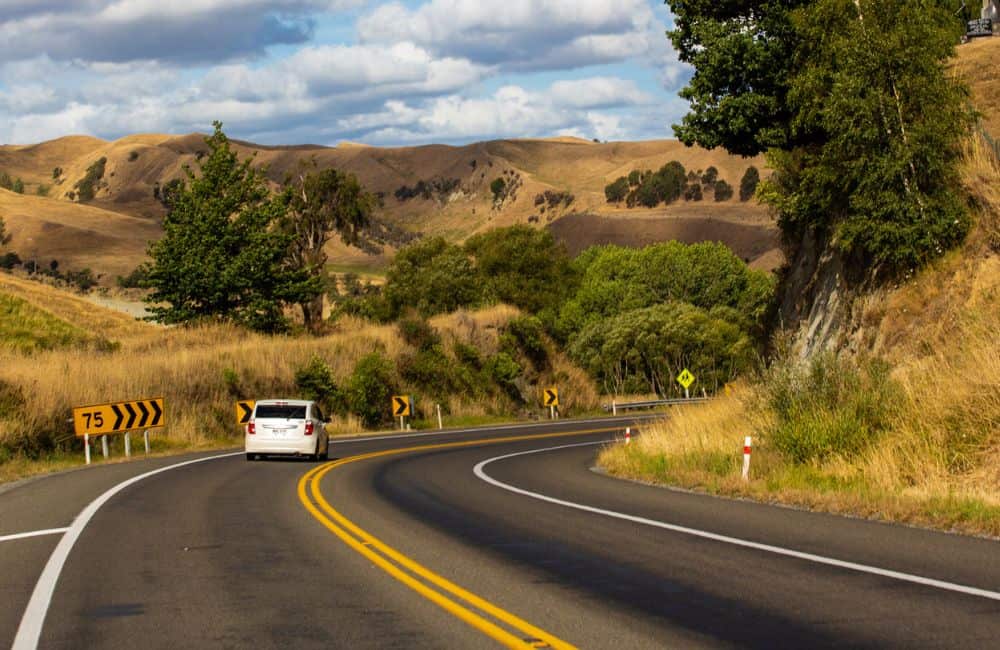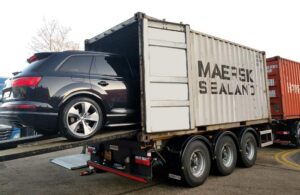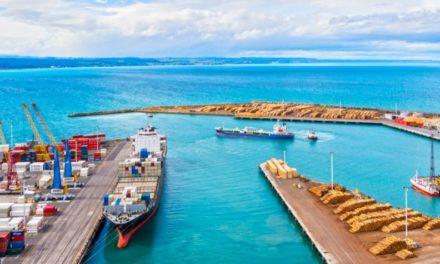The ultimate guide to importing your vehicle to New Zealand from the UK, including car import laws and what types of cars are eligible from the UK
Our comprehensive guide on importing a car to New Zealand provides valuable information and guidance for individuals interested in bringing a vehicle from the UK to New Zealand. It aims to address the common question many people have: “Can I import a car from the UK to New Zealand?”
While the answer is yes, the process is not straightforward, especially for those unfamiliar with the intricacies of car importation. That’s why we have created this guide to help simplify the process and clarify the necessary steps.
The guide begins by outlining New Zealand’s car import laws. Understanding the legal requirements is crucial when importing a vehicle, as compliance with these regulations is mandatory. We provide an overview of the relevant legislation, including the customs and quarantine requirements that must be met.
NB: This guide is for information purposes only. Whilst we have done our best to ensure it is accurate and up to date, rules are subject to change, and you should do your due diligence and speak to an adviser to assess your circumstances.
Free Online Car Shipping to New Zealand Cost Calculator
Contents
- 1. The Benefits of Importing Your Car to New Zealand from the UK
- 2. Is It Worth Importing A Car To New Zealand?
- 3. New Zealand’s Car Import Laws
- 4. Immigrants’ Vehicle Qualifications
- 5. How To Import A Car To New Zealand
- Step 2: Identity, Prepare, And Collect The Documents You Need
- Your eligibility to import a vehicle
- Documents required:
- Proof of ownership and vehicle registration history
- Proof of your vehicle’s identity
- Proof of your vehicle’s eligibility for registration in New Zealand
- Proof your vehicle can be classified as an Immigrant Vehicle if applicable
- Documents required for Customs Clearance
- Documents required for Quarantine Clearance
- Step 3: Arrange to ship your vehicle
- Step 4: Arrange to have your vehicle Border Inspected (NZTA Approved BIO) when it arrives in New Zealand
- Step 5: Arrange quarantine inspection for your vehicle when it arrives in New Zealand
- Step 6: Arrange for customs clearance
- Step 7: Arrange an Entry Certifier for your vehicle’s final clearance if you want to use it on public roads
- Step 8: Arrange for any necessary modifications or repairs to be made to the vehicle in order to meet its approval conditions.
- 6. What Cars Are Eligible For Import Into New Zealand?
- 7. Cost Of Importing A Car To New Zealand
- What are the options for shipping your car to New Zealand?
- Looking for a company to ship your car to New Zealand?
1. The Benefits of Importing Your Car to New Zealand from the UK
Are you wondering if importing your car to New Zealand is worthwhile or if it would be better to just sell it here in the UK and buy a new one when you get to the land of the long white cloud?
Before you do, there are many benefits to taking your car with you to NZ:
- Cost savings: Some vehicles are more expensive in New Zealand, so do your research. If replacing your vehicle in New Zealand costs more than shipping your current one, it will definitely be worth considering taking it with you.
- Availability: Many car models are unavailable in New Zealand. If yours isn’t, and you want to stick with what you know, you’ll have to take it with you.
- Sentimental Attachment: If it has sentimental value – perhaps it’s been in the family for a while – you’ll want to take it with you when you migrate to New Zealand.
- Better the Devil You Know: You know (and love) your car…You know its current service and driving history, which you won’t know if you buy a used one in NZ.
- Duty/Customs Free: Under New Zealand’s Tariff Act 1988, you can import your car without paying customs duty or GST. Conditions apply, but we’ve outlined all those for you later in this article.
If you need help understanding how to register an imported car in New Zealand, a good car shipping company, like PSS, can help.
2. Is It Worth Importing A Car To New Zealand?
Importing a personal car to New Zealand is viable, depending on your circumstances. The benefit is you won’t be driving in an unfamiliar vehicle on unfamiliar roads, and it may be cheaper to take your car with you than to buy one in New Zealand.
Conversely, importing a car into New Zealand does have some drawbacks too. It involves collecting a lot of paperwork, researching, and coordinating several import processes at the other end. New Zealand also has strict car import compliance regulations, so unless your vehicle is relatively modern, you won’t be able to license it there.
3. New Zealand’s Car Import Laws
On the surface, New Zealand’s car import laws look relatively straightforward. However, the devil is in the detail, as they say! More precisely – New Zealand’s comprehensive compliance requirements can be daunting for anyone who isn’t mechanically minded or up to speed on modern in-car technology.
Furthermore, as the vehicle owner, you’re responsible for doing most of the legwork yourself (unless you get an import broker or agency to do it for you). That can make it a time-consuming process unless you know what you’re doing, and even then, there’s always the distinct possibility you’ll miss a critical document you didn’t think you had to provide! We hope this guide will make it a little easier for you!
NB: The New Zealand Government recommends contacting an Entry Certifier (or a broker) and discussing your vehicle with them to ensure it will pass BEFORE making any decisions about importing it. You don’t want to spend time and money on shipping only to find you’re stuck with a car you can’t drive without many expensive modifications. Furthermore, this allows you to send your vehicle to a port where a certifier is available or arrange to transport the car from its entry port to a certifier.
Important Point 1 about New Zealand’s Car Import Laws
New Zealand has very few restrictions on importing new or used vehicles. Therefore, you can essentially import whatever vehicles you want. However, used cars being imported for the first time (with a few exceptions) must go through a 3-step import process that:
- Verifies ownership; and previous registration history
- Records details, physical condition, and odometer reading
- Calculates any duties or taxes that may be payable
- Checks for bio-security compliance
Important Point 2 about New Zealand’s Car Import Laws
All vehicles driven on public roads must also undergo a 4th step – Entry Certification. This step ensures they comply with New Zealand’s Land Transport Rules. Only when a vehicle has passed this final step is the owner issued with documents that allow the car to be registered and licensed for use on public roads.
Other Important Things to Know about New Zealand’s car import laws
The following is a summary of some other things you should know about New Zealand’s car import laws:
- You must be a citizen OR have residency status to be eligible to import a vehicle into New Zealand. You must also live there (with official residency paperwork per the list below) by the time your car arrives.
- To qualify for certain concessions, you must import your vehicle within 18 months of your arrival in New Zealand.
- New Zealand’s vehicle registration system is regulated by the Land Transport Rules.
- The Waka Kotahi NZ Transport Agency (NZTA) administers the sections of the Land Transport Rules that govern the eligibility of vehicles to be driven on public roads, including those being imported.
- The NZ Customs Service administers import taxes and duties.
The Ministry for Primary Industries (MPI) administers all bio-security and quarantine regulations and inspections through Biosecurity NZ
There are 4 steps to shipping a car to New Zealand, the first 3 of which are mandatory for ALL imported used road vehicles regardless of intended end use:
- Border inspection (NZTA-appointed border inspection organisations or BIOs) upon arrival in New Zealand. Once the vehicle has gone through the border inspection, the vehicle’s details are entered into the NZTA’s Motor Vehicle Register (MVR). However, this is no guarantee that the car will be passed for final licensing and driving on public roads.
- Quarantine inspection (Ministry for Primary Industries or MPI),
- Customs clearance (NZ Customs Service), and
- Entry certification (NZTA) – the final step in the import process and the one your vehicle MUST pass to be licensed for use on public roads. If you don’t intend to use your vehicle on public roads, it doesn’t need to go through this last step.
Once the vehicle has passed all 4 steps, the Entry Certifier will issue you an Application to register a motor vehicle form (MR2A) and a warrant or certificate of fitness. You then use these documents to register and license your vehicle with the Transport Agency.
Compliance Requirements For Imported Vehicles
- All used vehicles (cars, mopeds, motorcycles, off-road passenger vehicles, vans, utes, and minibuses, as well as all heavy vehicles), being imported into New Zealand for use on public roads must comply with the current standards set down by the Land Transport Rules. NB: There are certain exceptions concerning emissions, braking systems, and front impact systems that we detail below.
- All imported used vehicles (on or off-road) must meet strict bio-security requirements determined by the Ministry for Primary Industry (MPI). This includes the removal of any or all bio-contaminants in or on the vehicle (organic matter such as soil, vegetation, animal, human etc.) BEFORE the car leaves the UK.
You must then provide certification of this bio-security cleaning to MPI/Biosecurity NZ when the vehicle arrives in New Zealand. It will also be quarantined there for biosecurity inspection and may require further cleaning at that point (at your expense).
- All imported used vehicles, including those for purely off-road / display use, must pass through Customs Clearance and are only released to the Entry Certifier (if applicable) once all taxes and duties have been paid.
Immigrants’ Vehicles
New Zealand’s car import laws also make special provisions for personal overseas vehicles belonging to eligible new migrants or returning New Zealand citizens. In cases where these vehicles don’t meet specific standards set down by the Land Transport Rules, they may be able to be classified as an Immigrants’ Vehicle and allowed in that way. (We say ‘may’ because you must meet certain conditions to qualify, including compliance with residency status). Note – if the vehicle does comply with the relevant standards, you don’t need to have it classified as an IV.
The following is a summary of the qualifications for this type of vehicle:
Only an Entry Certifier can classify your vehicle as an Immigrants’ Vehicle, and you must apply and pay ($184NZ) to have this done.
Your vehicle must still undergo the same import processes as all other used cars but is exempted from having to comply with the following clauses in the Land Transport Rules:
- Land Transport Rule: Frontal Impact Amendment 2008 section 2.1(7)(e)
- Land Transport Rule: Vehicle Exhaust Emissions 2007 section 2.2(3)(a)
- Land Transport Rule: Light Vehicle Brakes 2002 section 3.1(4)
- Land Transport Rule: Light Vehicle Brakes 2002 section 2.7(7)
Notwithstanding the above, it must comply with all other general safety and emissions standards and carry an appropriate EC whole vehicle approval plate/sticker, applicable UN/ECE Approval plate/sticker or statement of compliance indicating this.
Many eligible vehicles also qualify for GST and duty-free concession under the Tariff Act 1988.
We go into more detail about the process for having your vehicle classified as an Immigrant Vehicle below.
4. Immigrants’ Vehicle Qualifications
To qualify for your vehicle to be classified as an Immigrants Vehicle, you and your car must meet specific criteria. It is your responsibility to arrange, lodge, and pay for, the required application (Application for Identification of an Immigrants’ Vehicle (DVCUAF06) form) once your vehicle has arrived in New Zealand.
Note – it must still go through all 4 import steps; the only difference is that it doesn’t comply with the current version of those 4 Land Transport Rules.
Immigrant Vehicle eligibility:
- The car must be more than 12 months old
- Be fitted with an odometer that CORRECTLY reflects the distance it has been driven in its lifetime
- Doesn’t comply with one or more of the above Land Transport Use standards
- You must have personally owned AND USED it for at least 12 consecutive months immediately before moving to New Zealand (and be able to prove both ownership and use)
- You must apply to import the vehicle within 18 months of arriving in New Zealand to qualify for certain exemptions
- You can only own and import one Immigrants’ Vehicle (ever). If you want to import a second car at any time, it will be subject to regular import regulations
Your eligibility:
You must be a New Zealand expat who has returned to New Zealand after a minimum of 21 consecutive months living abroad or meet one of the immigration criteria listed in Section 6 below.
Note that the DVCUAF06 form additionally includes a declaration you must complete and sign verifying that:
- You’ve been living abroad for at least 21 months before migrating or returning to New Zealand
- You’ve personally owned and used the vehicle overseas for personal use for at least 12 months prior to migrating or returning to New Zealand.
- Don’t have or have not had any other Immigrant Vehicle
- You are not importing the vehicle for someone else
- Will keep the vehicle for at least 12 months after registering it in New Zealand
- Will not hire, lease, use it for reward or in a transport service
5. How To Import A Car To New Zealand
This is a rudimentary guide about importing a car to New Zealand. For more detailed information, visit the NZ Transport Agency website.
Free Online Car Shipping to New Zealand Cost Calculator
Step 1: Do your research
Importing a car into New Zealand is not easy! Therefore, arming yourself with all the relevant information will help you make a fully informed decision.
The things you need to find out include:
- Are you eligible to import a vehicle into New Zealand?
- Is your vehicle eligible to be registered in New Zealand?
- What are the risks involved?
- What documents do you need?
- What government agencies are involved, and what paperwork does each require? We’ve detailed this in section 3 above for you.
- What costs will you, or could you, be up for? Note: older passenger vehicles and vehicles that must be modified are different again. We go into more detail regarding costs further down, but there is also information about fees and charges on the relevant department websites.
- How long do these processes take, in particular, the application process? In some cases, the paperwork must be lodged a set amount of time before the activity happens.
- Should you use a broker?
- Does your vehicle require modification to comply with New Zealand’s Land Transport Rules? You’ll need to contact an Entry Certifier for this.
Are you eligible to import a vehicle into New Zealand?
You must be living in New Zealand either as a citizen, resident or returned citizen to be able to import a vehicle into New Zealand. Make sure you have the proof of this.
What Class Of Vehicle Is It?
New Zealand has two categories of vehicles – light (up to 3500kgs) and heavy (over 3500kgs) – based on gross vehicle mass (GVM). Light passenger vehicles – those designed to carry up to 9 passengers – are further split into three classes depending on body type:
- Standard passenger cars
- Forward control vehicles (mini-vans etc)
- Off-road passenger vehicles (4X4s etc)
You must ascertain which category your vehicle falls into to collect the proper supporting documents.
Does it comply with the relevant standards for its class?
A series of standards (see Importing Used Vehicles From Europe for eligibility for UK vehicles) apply to all vehicles being imported into New Zealand for use on public roads. You need to identify which ones apply to your car – and ensure it meets them – if you want to be able to register and drive it in New Zealand.
Usually, your vehicle must meet the requirements set down by applicable clauses in New Zealand’s Land Transport Rules, including:
- Land Transport Rule: Frontal Impact 2001 (amendment 2008)
- Land Transport Rule: Vehicle Exhaust Emissions 2007 (current rule)
- Land Transport Rule: Light Vehicle Brakes 2002 (current rule)
- Land Transport Rule: Clean Vehicle Standard 2022
However, if it doesn’t comply with the above 4 rules, and you meet all other eligibility requirements, you may be able to have it classified as an Immigrants Vehicle as explained above.
Which exemptions may or may not apply to your vehicle?
Low-powered vehicles and light trailers up to 3500kgs are exempt from the Entry Certification step of the import process. NB: A ‘low-powered vehicle’ for New Zealand’s import regulations includes vehicles like e-scooters, mobility devices, certain types of power-assisted cycles, Yike bikes and so on. However, there are exceptions, so check the NZTA website for more information.
Pre-1990 (including vintage vehicles) and Special Interest vehicles are exempt from some of the entry requirements in the above Land Transport Rules.
Vehicles (Immigrants’ Vehicles) owned by immigrants moving to and expats returning to New Zealand are also exempt from some of the requirements of the above Land Transport Rules.
What are the risks?
The main risk is that your vehicle may not be approved for licensing and use on public roads in New Zealand, so take the time to research and contact an Entry Certifier before you start the import process.
Step 2: Identity, Prepare, And Collect The Documents You Need
You must supply many supporting documents for each step in the import process. Some of them are required for multiple steps.
Your eligibility to import a vehicle
You require documents to prove you are eligible to:
- Import your vehicle,
- Claim any applicable customs and GST exemption,
- Have your car classified as an Immigrant Vehicle
Documents required:
- A New Zealand passport, OR
- An Australian passport, OR
- A current NZ residence visa or permit, OR
- A current returning NZ resident’s visa or permit, OR:
- A current Australian permanent residence visa (including a resident return visa), OR
- A current NZ work visa or work permit that was issued for a minimum of 12 months, OR
- A current NZ work visa or work permit issued under the Work to Residence (Skilled Migrant Category) policy or the Long Term Business Visa/Permit category, OR
- A current NZ visitor’s visa or permit that was issued for a minimum of 3 years
Proof of ownership and vehicle registration history
Before importing any vehicle into New Zealand, you must produce documentary evidence of your legal ownership. This paper trail must also track the vehicle’s legal ownership back to the last registered owner in the country where it was last registered.
Documents you’ll need include:
- Original copies of the vehicle’s previous registration, deregistration, or transfers of ownership papers,
- An original copy of an invoice, receipt, bill of sale etc
- Vehicle details – make, model, odometer reading, VIN/chassis number
You’ll have to produce this paperwork for your Border Inspection, Customs Clearance, and Entry Certification
Proof of your vehicle’s identity
Part of the import process involves identifying your vehicle and ensuring it is ‘who’ you say it is. To do this, you’ll need documents that verify:
- Vehicle type (van, motorcycle, passenger car etc.)
- Vehicle make and model
- Vehicle year of manufacture
- VIN (Vehicle Identification Number) or chassis or frame number
- Vehicle seating capacity
You need this information for all 4 import steps.
Proof of your vehicle’s eligibility for registration in New Zealand
You are required to provide proof of compliance with the relevant standards as follows (taken from the NZTA website):
- Emissions Standards: ensure it has (you have) the correct European Community (EC) whole vehicle approval plate/sticker, a suitable UN/ECE approval plate/sticker, a certificate of conformity, or a statement of compliance that includes an approved emissions standard
- Frontal impact standards: if the vehicle is not already on New Zealand’s list of compliant vehicles, it/you must have a suitable European Community (EC) whole vehicle approval plate/sticker, a suitable UN/ECE Approval plate/sticker or statement of compliance
- Light-vehicle brakes standards: you must provide evidence of compliance with electronic stability control (ESC) standards
- Fuel consumption: you’ll require a fuel consumption certificate
- Overall standards: it /you should also have a suitable EC whole vehicle approval plate/sticker, a suitable UN/ECE Approval plate/sticker or a statement of compliance. In many cases, an overall compliance plate or sticker will contain the required emissions, frontal impact, and brakes evidence to verify that your vehicle complies with the relevant New Zealand standards.
Proof your vehicle can be classified as an Immigrant Vehicle if applicable
Suppose you’re also applying to have your vehicle classified as an Immigrant Vehicle. In that case, you must prove that you immediately owned and used the vehicle for at least 12 continuous months overseas before moving to New Zealand. To do so, you will need to lodge the following documents with your DVCUAF06 form:
- Proof of ownership (overseas registration papers in your name) AND
- Proof of minimum 12 months overseas ownership (airline tickets, hotel bookings, overseas utility bills in your name, lease or rental agreement, immigration visa, etc)
- Importation proof (bill of lading, shipping or insurance documents in your name)
- Proof of purchase date of the vehicle if you can’t verify this with other documents (purchase receipt, bill of sale or similar in your name)
- Proof of New Zealand citizenship or residency or right to take up permanent residence in New Zealand (see list above for acceptable documents)
Documents required for Customs Clearance
You’ll need to provide the following documents for clearance through customs:
- NZCS 218 form unless you are ONLY importing a vehicle AND using a broker to complete the clearance process.
- Copy of your passport for photo ID
- If you don’t have a New Zealand or Australian passport, you’ll also need a document that authorises your right to residence in New Zealand (see the list above)
- Dated purchase invoice for the vehicle
- Proof there is no finance owing on the vehicle
- Copies of the vehicle’s registration and insurance documents
- Vehicle details – make, model, odometer reading, VIN/chassis number
- Document verifying your car has arrived in New Zealand i.e. Bill of lading, arrival notice
- Shipping invoice showing the freight and insurance costs of shipping to New Zealand
You may be exempt from paying duties and GST on the vehicle if you can prove the following:
- You lived outside New Zealand for at least 21 consecutive months before returning or moving to New Zealand.
- You have personally owned and used your vehicle for a minimum of 12 months before leaving the UK for New Zealand or before your departure for New Zealand (whichever is early). To prove this, you will need:
- Vehicle purchase and possession receipts
- Vehicle registration papers
- Vehicle insurance papers
- Vehicle maintenance records.
- Documents showing when the vehicle left your care in the UK for shipping to New Zealand
You must also agree in writing that you won’t sell or otherwise dispose of the vehicle for at least 24 months after its import into New Zealand. If you do, you will have to pay duty.
Documents required for Quarantine Clearance
How your vehicle arrives in New Zealand (sealed / unsealed shipping container, air freight etc.) will determine the documents you need to present to the MPI to have your vehicle processed and cleared through quarantine. There is more detailed information on the MPI website.
Step 3: Arrange to ship your vehicle
 Once you’ve satisfied yourself that your vehicle is eligible to be imported into New Zealand, and you have all your supporting documents ready to go, your next step is contacting a removalist or freight company that ships cars from the UK to New Zealand.
Once you’ve satisfied yourself that your vehicle is eligible to be imported into New Zealand, and you have all your supporting documents ready to go, your next step is contacting a removalist or freight company that ships cars from the UK to New Zealand.
However, before your car can actually be loaded onto a ship for its trip to New Zealand, there are several final things to take care of. These include your car being professionally bio-cleaned (get a certificate). Also, you will need to deregister the vehicle if it is currently registered in the UK and remember to keep all the documents, as you’ll need them to provide proof of legal ownership.
Step 4: Arrange to have your vehicle Border Inspected (NZTA Approved BIO) when it arrives in New Zealand
NB: There are NZTA-approved BIO’s in the UK, so if you arrange to have your vehicle inspected at one of them, it doesn’t need to be done again upon arrival in New Zealand.
The border inspection verifies the following:
- Your vehicle’s make, model, VIN and/or chassis number
- Your identity as the importer
- The odometer reading at the point of inspection
- Any significant or obvious structural damage or deterioration and also any water damage
- Whether it’s a right-hand or left-hand drive vehicle (most left-hand drive vehicles must be converted to right-hand drive before you can register them for use on public roads in New Zealand. There are exceptions, however, and you’ll find more information about importing a LHD vehicle into New Zealand here.)
This information is then forwarded to the NZTA’s Transport Registry Centre for recording in the Motor Vehicle Register (LANDATA database). The process usually takes up to 48 hours.
Note – the purpose of the border inspection is not to determine if your vehicle is eligible to be licensed and driven on public roads. Border inspectors merely collect the information outlined above for recording purposes. Once they’ve done their bit, a pink sticker is attached to the driver’s side windscreen wiper.
Step 5: Arrange quarantine inspection for your vehicle when it arrives in New Zealand
After the Border Inspection, your vehicle must be checked by MPI (Biosecurity New Zealand) to ensure it complies with bio-security regulations. There is a comprehensive document available from the MPI website that details all the requirements depending on how your vehicle has been shipped. If your car requires additional cleaning for compliance purposes, you’ll be sent an invoice for this.
Once it has passed the MPI inspection, another sticker will be attached to the wiper. Then it’s on to New Zealand Customs Service.
Step 6: Arrange for customs clearance
New Zealand Customs assess the vehicle for calculating duties or taxes payable. If any are payable, they will hold the vehicle until these are paid. Note – most new migrants and returning citizens can bring their overseas vehicles free of duty and GST charges.
You can either deal directly with customs or organise for your shipping company or a broker to do it on your behalf. If you’re doing it yourself, you will need to email the documents. They will prepare your clearance and then email you when it’s completed and let you know what comes next. Providing you’ve supplied all the necessary documents, your vehicle can now be released into your waiting hands! However – you still can’t drive it anywhere, or at least not on public roads.
Step 7: Arrange an Entry Certifier for your vehicle’s final clearance if you want to use it on public roads
Armed with all your clearances, you can now proceed to the final step in your vehicle’s journey to New Zealand with you! The Entry Certifier will use the information supplied by the Border Inspector to determine if your vehicle is OK to register as is or if it requires modifications/repairs first. They will also check its compliance with New Zealand standards (this is where all those compliance plates and stickers we mentioned earlier are needed).
This is also the point at which you apply for classification as an Immigrants’ Vehicle if required i.e. your vehicle doesn’t comply with the standards mentioned above. The Certifier will get you to complete the DVCUAF06 form and take it from there. Note – if your vehicle complies with these standards, you don’t need to get it classified as an Immigrants Vehicle.
When the Certifier is satisfied your vehicle is fully compliant either as a regular import or as an Immigrants’ Vehicle, you’ll be issued with a certificate of fitness and an MR2A (Application to register a motor vehicle) form. Congratulations! You can now take your vehicle to a NZTA licensing agent and get it registered to drive around in.
OR you may need to have some modifications/repairs done, in which case you’ll need to move to Step 8.
Step 8: Arrange for any necessary modifications or repairs to be made to the vehicle in order to meet its approval conditions.
As the vehicle owner, you are responsible for all the various fees, charges, and taxes that will be incurred for required work, reinspections etc.
6. What Cars Are Eligible For Import Into New Zealand?
New Zealand has very few restrictions on what makes and models of vehicles can be imported. The focus is ensuring that cars comply with the New Zealand Land Traffic Rules. If a vehicle doesn’t comply with these, it can’t be imported unless it qualifies as an Immigrant’ Vehicle. New Zealand also introduced Clean Car Standards legislation that took effect on November 1st 2022.
The following is a class list of approved vehicles for import into New Zealand:
Light vehicles with a GVM not exceeding 3500kg:
- Classes LA and LB mopeds
- Classes LC, LD, LE (motorcycles)
- Class MA (passenger car up to and including 9 seats)
- Classes MB, MC (forward-control or off-road passenger vehicle, up to and including 9 seats)
- Class NA (light goods vehicle)
- Classes MD1, MD2 (light buses more than 9 seats).
Heavy vehicles with a GVM exceeding 3500kg:
- Classes MD3, MD4, ME (heavy buses)
- Classes NB, NC (heavy trucks)
- Classes TC, TD (heavy trailers).
You can also import speciality, special interest vehicles and hybrids and electric vehicles.
Left-hand drive vehicles may also be imported into New Zealand under certain circumstances, such as if the vehicle is a classic car or a specialist vehicle not available in right-hand drive. However, most modern cars must be converted to RHD, which can be very expensive and impractical as the conversion may compromise the frontal impact design of the vehicle.
7. Cost Of Importing A Car To New Zealand
Typically, importing a personal car into New Zealand includes shipping costs plus around $800 – $1000NZ for the quarantine, border inspection, customs clearance, entry certification, registration and licensing processes. Add $184 if you need an Immigrant Vehicle classification. This does not, however, factor in any additional cleaning, repairs, modifications, or reinspections that may be required. Also, add GST unless the vehicle qualifies for an exemption from this.
Other potential fees include:
- Cleaning fees before departure from the UK,
- Storage and delivery fees,
- Logistics services fees,
- Wharf and transport fees,
- Brokers fees if you’ve hired one to help with any stage of the import process.
Visit these links for more precise information about the cost of importing a car to New Zealand:
What are the options for shipping your car to New Zealand?
Option A: Container Car only shipping method
This car shipping method means that you will have exclusive access to a dedicated container that ensures the secure transportation of your car (or any other vehicle) to New Zealand.
You can choose from multiple convenient locations for arranging this service, including your residence, a warehouse, or a shipping line container depot, based on your preferences. Subsequently, your car will be loaded onto a vessel for transportation from the UK to New Zealand.
Option B: Shipping a Car with household items
Another option is combining your car shipment with personal items in a single load. A team will deliver a shipping container to your home, ensuring careful placement of your vehicle inside for shipping to New Zealand. Any available space can accommodate your household goods and homewares, making it an ideal choice if you’re relocating to New Zealand and have multiple items to send.
A team of experts will skillfully pack and wrap your belongings using approved materials, ensuring secure handling throughout. They will be placed alongside your secured vehicle within the container. Upon arrival at your doorstep, the container will be sealed with a customs seal before being transported to the UK port terminal for loading onto the vessel. Subsequently, the process of transporting your household and car to New Zealand will commence.
Option C: Roll On/ Roll Off (RORO) or Lift On/ Lift Off (LOLO)
This method entails driving your vehicle onto the vessel, where it will be securely fastened for transportation to New Zealand. Upon arrival, the vehicle will be driven off the vessel.
It’s important to consider that this option does not provide the same level of protection as when your car or vehicle is sealed inside its container.
Nevertheless, this alternative proves beneficial for larger vehicles such as vans, motorhomes, and caravans that may exceed the dimensions of a standard shipping container.
Looking for a company to ship your car to New Zealand?
Importing your car to New Zealand will be much easier if you get someone like PSS Removals to take care of it. We have a network of reliable contractors in the UK and New Zealand who will take the best care of your car. After all, if you’re going to the expense of taking it Down Under with you, you definitely don’t want anything happening along the way!
Shipping your car to New Zealand eliminates the need to rent a car or purchase a new one when you arrive there, and it can also be more cost-effective than buying a new one. It also means you won’t be driving an unfamiliar car on unfamiliar roads in a new country. To start the process of shipping to New Zealand, you can use our online cost calculator to receive a quote today.
Our expert guidance through a confusing tangle of red tape will make the importing process easy and stress-free, allowing you to enjoy all the benefits of having your car in New Zealand without any worries.







